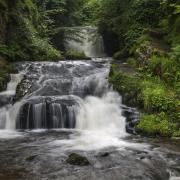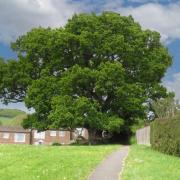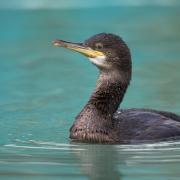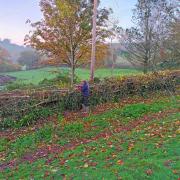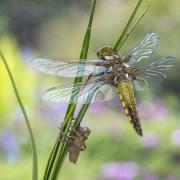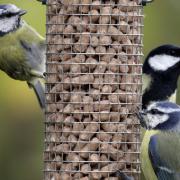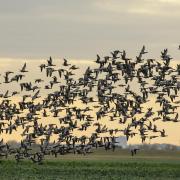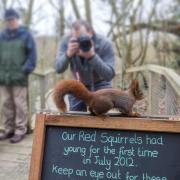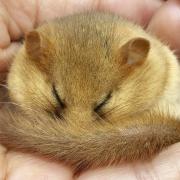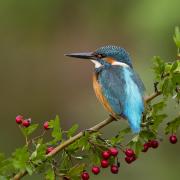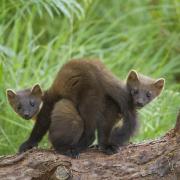In this particular stretch of the Exmoor coast, owned by the National Trust, wildlife is plentiful whatever the time of year, and a stroll along the coast path opens up some of the most spectacular views in the county.
The first holiday that my wife and I took together was to Woody Bay in North Devon. Keen to explore somewhere new to us both, we plumped for a winter visit and were subsequently snowed in, with the water supply to our self-catering chalet frozen solid. In the early stages of our relationship we viewed this isolation romantically and, on foot, we discovered some of the most dramatic and beautiful scenery in Devon. Since that first time we have returned in every season and, regardless of the time of year, we never fail to marvel at the wildlife that we encounter.
The coast between Woody Bay and the Heddon Valley to the west is owned by the National Trust, (www.nationaltrust.org.uk) Two footpaths running almost parallel between these two bays provide an excellent opportunity for a circular walk of around five miles.
If you're setting out from Woody Bay take the more difficult lower path first while you're feeling fresh. The steep slopes surrounding the bay create a cool environment rich in mosses and ferns. In spring the woodland floor here is covered with bluebells and the tough wood rush, whilst the paths are edged with wood sorrel and saxifrage.
The oak trees, protected from all but northerly winds and left alone because of the difficult terrain on which they grow, have grown old and tall. Standing on the path looking seaward, with the ground shelving away quickly, you can look into the canopy of trees no more than 20 yards distant. With this unusual advantage I've studied woodland birds at extremely close range. Nuthatches seem to be particularly numerous here, no doubt taking advantage of the many mature trees in which to find suitable nest holes. Their persistent 'qui qui qui' calls and similar but more enthusiastic song demand attention whilst their unique manner of running down as well as up the trunks of trees adds to their quirky appearance.
In the wooded area there are rhododendrons, once regarded as a sign of a landowner's wealth and now seen as an invasive pest, the spread of which has been steady and uncontrolled. Throughout the year they shade out all light and prevent native species from establishing. Fortunately, conservation groups are now tackling the problem with eradication measures.
Where the vegetation alongside the path opens out, the distant views along the coast and across to Wales are simply magnificent. From the viewpoints you can spot stacks and arches beneath the cliffs where seabirds such as guillemots and razorbills nest on narrow ledges in the summer, close to the foot of sheer rock faces. From a distance both species appear to be black and white; in reality the guillemot is dark brown. On the sea they dive in search of fish, whilst in flight their wings whir like a clockwork toy in overdrive. Fulmars and gulls nest higher up the cliffs, whilst shags find flatter, more open ledges close to the sea.
Probably the most numerous bird nesting in the heather along this stretch of path is the meadow pipit. This archetypal 'little brown job' is difficult to identify because they rarely allow a close inspection, but in spring they have a characteristic hovering downward flight, during which they sing with passion, in volume if not in melody.
The odd meadow pipit will serve as no more than a snack to a hungry peregrine falcon, but the precipitous rocky cliffs offer this top predator a safe refuge in which to nest. The peregrine's piercing cries often alert onlookers to their presence long before the bird's streamlined but chunky shape can be recognised.
Just above the beach at the mouth of the Heddon Valley are the remains of a 19th-century limekiln. Here limestone transported in by sea was burned to provide lime for counteracting the acidity of local soil and for making mortar and limewash.
The woodland along the valley side was once harvested to provide wood for pit props and bark for tanning leather. This ceased around the end of the 19th century and all the trees left are of approximately the same age. The National Trust's policy is to thin them out to encourage stronger growth and leave any dead wood in place to decay naturally. Many of the trees on the west side of the valley were destroyed by the hurricane force winds of 1981 and it's interesting to see that the trees regenerated naturally continue to outgrow those planted by National Trust staff.
The route now follows alongside the River Heddon where you can spot both dipper and grey wagtail. After a refreshment stop at the Hunter's Inn, the return leg is along the higher track which passes through woodland then onto heath. You can hear chiffchaffs singing in the trees in spring, whilst on the wood margins you're more likely to spot the similar-looking willow warbler. The chiffchaff's staccato 'chiff chaff' call makes identification straightforward, but the song is no match for the fluid notes of the willow warbler. Song is the easiest way to distinguish these two summer visitors. On the open heath you may spot meadow pipits, stonechats and the ubiquitous wren.
Back out above the coast, make a small detour to the Roman fortlet, a small military outpost inhabited during the first century AD. Defence against Welsh invaders was the primary aim of this small garrison and as it's situated at the highest point of the walk it offers commanding views.
At any point along this walk a raven may flap lazily overhead uttering a guttural croak; this is enough to clinch its identity, but its wedge-shaped tail and large size is further evidence that this is not just any old crow.
The gentle downward gradient of the carriageway, clinging to every twist and turn of the hillside as it winds its way towards Woody Bay, moves back from open heath to dense woodland. It's a route that I will never tire of.
Through the Seasons at Woody Bay
Spring
The woodlands are at their best, with wood sorrel, bluebells, opposite-leaved saxifrage and dog's mercury. On the woodland edges and in clearings dog violet flourishes, encouraged by the National Trust because it's the food plant for fritillary butterflies. Pairs of peregrine falcons display to each other to re-establish the bond between them. Nuthatches and great spotted woodpeckers establish territories in the woodland.
Summer
Summer migrant birds such as chiffchaff, willow warbler, wood warbler, blackcap and pied flycatcher bring a new lease of life to the wooded valleys whilst whitethroats join the stonechats on the heathland gorse. Look out for the relatively rare whitebeam amongst the oaks. On south-facing slopes there are the rare high brown fritillary butterflies. In early summer guillemots, razorbills, shags and fulmars can be seen on the cliffs. The highlight of late summer is undoubtedly the purple heather.
Autumn
Red deer begin their rut in September and may be seen anywhere in this area. Swallows, martins and wheatears can be seen flying along the coast, off on their winter migration, and in October meadow pipits can be seen migrating westwards. Look out for interesting fungi including the distinctive red fly agaric amongst the birch trees. Jays busy themselves searching for acorns only to bury them again in caches for eating when times get harder.
Winter
Ravens begin nesting in winter so that feeding their young coincides with the plentiful supply of natural carrion in late winter and early spring. Whilst other growth is at a low ebb, have a look at the wide variety of mosses and lichens to be found on the ground, rocks and trees.
DAVID CHAPMAN



